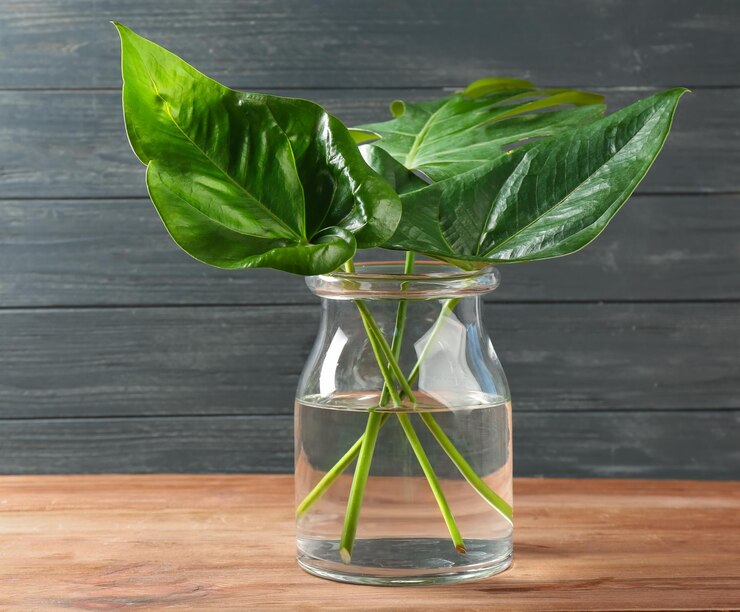“Le pothos dans l eau sans substrer” translates to growing pothos in water without soil. This method is a minimalist approach to nurturing one of the most resilient and aesthetically pleasing houseplants. Pothos, also known as Epipremnum aureum, is adored for its vibrant green leaves, trailing vines, and ability to thrive with minimal care. Cultivating pothos in water without soil adds a contemporary touch to indoor gardening while being practical and easy.
In this guide, we will explore how to grow pothos in water, its benefits, and tips for maintaining a healthy plant. By the end of this article, you will feel confident in adopting this method and adding a touch of greenery to your space.
What Is Le pothos dans l eau sans substrer?
Growing “le pothos dans l’eau sans substrat” means cultivating the plant directly in water without the use of soil or other mediums like pebbles or LECA. This method highlights the beauty of pothos’ trailing vines and allows you to observe the intricate network of roots that usually stay hidden in soil. It’s a unique way to display a plant that’s already beloved for its versatility.
Benefits of Growing Pothos in Water
- Low Maintenance: Water-grown pothos requires less attention than soil-based plants. There’s no need for regular repotting or concerns about pests that thrive in soil.
- Aesthetic Appeal: The transparent container allows you to showcase the roots, creating a modern and clean look. It’s perfect for minimalist or urban interiors.
- Space Saving: Without the need for pots filled with soil, you can grow pothos in small jars, glasses, or bottles that fit even the tiniest spaces.
- Pest-Free Environment: Soil can harbor pests like fungus gnats, but water-based pothos are less prone to infestations.
- Sustainability: Reducing the use of soil and substrates can make your indoor gardening practice more sustainable and eco-friendly.
How to Grow Le pothos dans l eau sans substrer
Follow these steps to grow pothos in water successfully:
1. Select Healthy Cuttings
- Choose a healthy pothos plant and identify a vine with at least 3-4 leaves.
- Cut just below a node (the point where leaves grow). Ensure the cutting is around 6 inches long.
2. Prepare the Container
- Select a clear glass jar, vase, or bottle to house your pothos cutting.
- Clean the container thoroughly to prevent algae growth.
3. Fill with Water
- Use filtered or distilled water for best results. Tap water can work but let it sit for 24 hours to allow chlorine to dissipate.
- Fill the container until the node of the cutting is submerged but avoid immersing the leaves.
4. Place in Indirect Light
- Position the container in a spot with bright, indirect sunlight. Direct sunlight can heat the water and harm the plant.
5. Change the Water Regularly
- Refresh the water every 7-10 days to avoid stagnation and prevent the buildup of bacteria.
- Rinse the roots during water changes to remove any slime.
6. Monitor Growth
- Within 2-4 weeks, you should see new roots sprouting from the nodes. Once the roots grow longer (around 2 inches), your pothos is established in its water home.
Common Challenges and Solutions
1. Algae Growth
- Issue: Green algae can develop in the water and on the container walls.
- Solution: Use opaque containers or place the plant in a darker area. Clean the container during water changes.
2. Yellowing Leaves
- Issue: Leaves turning yellow may indicate overexposure to sunlight or poor water quality.
- Solution: Adjust the plant’s position and ensure you’re using clean, chlorine-free water.
3. Root Rot
- Issue: Slimy or black roots are a sign of rot caused by stagnant water.
- Solution: Trim off the affected roots and replace the water frequently.
Tips for Thriving Pothos in Water
- Add Nutrients
- While pothos can survive in plain water, adding liquid fertilizer every 4-6 weeks will promote lush growth. Use a diluted houseplant fertilizer to avoid burning the roots.
- Prune Regularly
- Trim overgrown vines to encourage fuller growth and prevent the plant from becoming too leggy.
- Rotate the Plant
- Turn the container occasionally to ensure even light exposure, preventing uneven growth.
- Avoid Crowding
- If you’re using a small container, limit the number of cuttings to avoid overcrowding, which can restrict root growth.
- Decorate Creatively
- Experiment with unique containers like vintage jars, wine bottles, or colorful vases to enhance the visual appeal of your water-grown pothos.
Why Choose Le pothos dans l eau sans substrer?
This approach to growing pothos suits modern lifestyles where simplicity and aesthetics meet functionality. Whether you’re a seasoned plant parent or a beginner, this method is forgiving and rewarding. The absence of soil eliminates mess, making it an excellent choice for offices, apartments, or spaces where cleanliness is a priority.
Conclusion
“Le pothos dans l eau sans substrer” offers a unique, low-maintenance way to enjoy the beauty of pothos plants. By following the steps and tips outlined in this guide, you can successfully grow and maintain a thriving pothos in water. Its adaptability, combined with the visual charm of exposed roots and trailing vines, makes it an excellent addition to any indoor space.
FAQs About Le Pothos dans l’eau sans substrat
1. Can pothos survive permanently in water?
Yes, pothos can live indefinitely in water as long as it receives adequate nutrients, light, and regular water changes.
2. How often should I change the water?
Change the water every 7-10 days to keep it fresh and oxygen-rich.
3. Do I need to use fertilizer for water-grown pothos?
While not mandatory, adding a diluted liquid fertilizer every 4-6 weeks will encourage healthier growth.
4. Can I transfer a water-grown pothos to soil?
Yes, but it’s best to do so when the roots are at least 2-3 inches long. Gradually acclimate the plant to soil by keeping it moist initially.
5. What type of water is best for pothos?
Filtered or distilled water is ideal. If using tap water, let it sit for 24 hours to eliminate chlorine.
6. Why are my pothos’ roots turning slimy?
Slimy roots indicate rot caused by stagnant water. Trim the affected roots and refresh the water more frequently.
7. Can I grow other plants with pothos in the same container?
Yes, as long as the plants have similar water and light requirements. Ensure there’s enough space for all roots to grow.
By following this comprehensive guide, you’ll be well-equipped to embrace the beauty and simplicity of growing “le pothos dans l’eau sans substrat.






